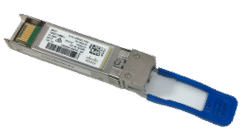Written by Craig Pasek, Product Manager, Transceiver Modules Group, Cisco 
Bandwidth Drivers for 25G
Bandwidth requirements in today’s Enterprise networks are now being driven by dramatic increases in video conferencing by such systems as Cisco’s Telepresence and other real-time applications such as Augmented Reality, Mixed Reality and Virtual Reality. These are taxing the limits of traditional 10G infrastructure. Whether it’s IEEE802.1ax WiFi Access Points or direct wired equipment with copper/fiber ports that require 1G/2.5G/5G/10G backhaul interfaces, new enterprisenetworks are being built with high speed equipment that now requires 25G ethernet interfaces.

Cisco’s new SFP-10/25G-LR-S transceiver provides Single Mode Fiber (SMF) interfacing for Cisco’s newest platforms with 25G interfaces, including the new Catalyst 9500/9400/9300/9200’s, other new switches, new routers, and new servers / NICs (Network Interface Cards).

What is “LR”?
For SFP (Small form Factor Pluggable) transceiver technology “LR” stands for Long Reach that traditionally refers to a reach of 10km. The 25G SFP form factor, called SFP28 (28 Gb/s to account for encoding overhead) has been standardized and the LR specifications are available in IEEE P802.3cc™ – 2017 Amendment 11: Physical Layer and Management Parameters for Serial 25 Gb/s Ethernet Operation Over Single-Mode Fiber.
The 25G transceiver is similar to the 10G transceiver in that it uses a simple NRZ (Non-Return-to-Zero) modulation but it has higher bandwidth transmitter and receiver for 25G communication. It also includes a CDR (Clock Data Recovery) circuit to clean up the signals. The 25G transceiver also requires that the host ports support RS-FEC (Reed Solomon – Forward Error Correction), which is not required for 10G.
Cisco’s newest 25G products, including the Catalyst Enterprise switches 9500/9400/9300/9200’s, have advanced ASICs that implement RS-FEC for 25G communication so that transmission error rate can be improved from a BER (Bit Error Rate) of 5×10-5 to 1×10-12. A BER of 1×10-12 is traditionally considered to be “error free” and is associated with other ethernet rates where upper layer protocols can deal with infrequent transmission errors.
Inter-building and Intra-building applications for SFP-10/25G-LR

25G-LR SMF transceivers are now being used for both inter-building and intra-building campus applications to provide high speed connectivity.
Inter-building applications: In large campus environments 25G is used to connect from the building’s distribution switches to a core switch(es) in another campus building. Because of the 25G-LR’s reach of 10km (~6.2 miles) the transceiver provides an excellent low-cost solution for relatively large campus environments such as hospitals, medical offices, college campuses, and business parks. The core switch typically connects to the service provider’s metro/core network with 40/100G links, but those links may also use 25G LR technology.
Intra-building applications: In many situations SMF is used (or has been used) to connect wiring closet switches for distribution. In these applications, network builders and architects go beyond the limits of the traditional 300m over OM3 (or 400m over OM4) MMF (Multi Mode Fiber) by using SMF for large spans found in mega shopping malls, huge airports, and large manufacturing buildings. Now with Cisco’s SFP-10/25G-LR, networks can communicate at 25G without changing the SMF fiber infrastructure.
Migration from 10G to 25G
The new SFP-10/25G-LR transceiver has dual-rate capability that enables interoperability with 10G-LR SMF transceivers. This allows the network to be incrementally upgraded at either the end of the fiber. For example, Figure 4 shows how a Catalyst distribution switch is replaced with a new switch equipped with a SFP-10/25G-LR, but still communicates with the legacy 10G Catalyst wiring closet switch using 10G. Then when the wiring closet switch is replaced with a new 25G Catalyst switch, it communicates with the distribution switch at 25G without changing the transceiver at the latter end.

Interoperability with 40G and 100G
In some circumstances, the distribution switch (or far end switch) may only have QSFP interfaces. The new SFP-10/25G-LR it can interoperate with Cisco’s QSFP-100G-PSM-S transceiver or with Cisco’s QSFP-4X10G-LR-S transceiver via fiber breakout cables or cassettes, thereby connecting QSFP ports with SFP ports. 25G mode requires the use of RS-FEC (Forward Error Correction) on both hosts, which is available on Cisco 100G and 25G ports.

Learn more about how Cisco’s 25G transceiver products are transforming the industry here .


CONNECT WITH US